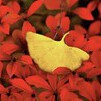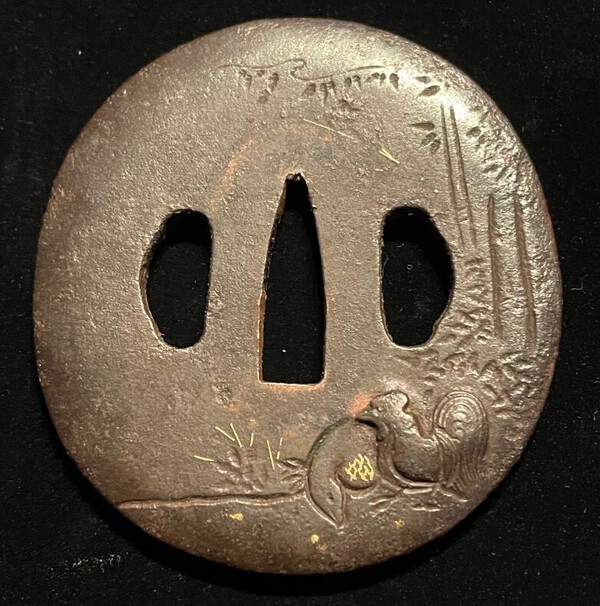-
Posts
1,974 -
Joined
-
Last visited
-
Days Won
5
Content Type
Profiles
Forums
Events
Store
Downloads
Gallery
Everything posted by Mark S.
-
I know this is a really basic question and hope it won’t cause too many
-
-
A recent acquisition has brought a question to my mind about polish, and I apologize if previously discussed. Most of my blades have a rather ‘white’ appearance to the hamon, but what process is used that causes the ‘smoky’ appearance as shown in my pics? All are same blade, just different angles. I know I’ve seen it before (not saying it’s wrong or bad) and I just never thought about it, but I guess the reason I’m bringing this up now is how prominent it is on this blade and it made me go… hmmmm??? Probably a very basic question, but don’t remember it being discussed before?
-
I’m sorry if what I’m about to show is too rudimentary, but sometimes it helps to see the difference between the formal kanji with a different form laid over the top. Original kanji in black and kanji you showed in red (very rough ):
-
-
Please excuse the quality of the attached info, but it is from an on-line snapshot from another source… so a copy of a copy of a copy… From Japanese Swordsmiths Vol 1 & 2 by Hawley:
-
Well… that and a 10 year apprenticeship under a trained sword polishing teacher and there you go… a quick read: https://www.militaria.co.za/nmb/topic/35486-a-word-about-amateur-polishing/
- 11 replies
-
- 1
-

-
-
I’m going to go out on a limb with a few things. Gut reaction based on small Sori (curve of blade) is kanbun era or thereabouts. Due to condition, almost impossible to give a guess on school. Hamachi area seems pretty intact and there might be enough meat for a polish, but without being able to see any boshi in the kissaki, not sure if there is enough so it can be re-shaped without boshi disappearing. This blade would take a lot of work and not sure if economically wise… but if for sentimental reasons, $$$ isn’t always everything. Just be sure you understand that you may never get your money back should you decide to sell.
-
As you didn’t explain what you mean by ‘strange’, my following statements are a bit of a guess. I think what you see as strange is the difference between the actual hamon and the hadori polish… it may look almost like ‘two hamons?’ It is fairly common especially with a heavier hadori polish to have some difficulty seeing some of the activities until you can differentiate between the two.
-

Outright fake or "island" sword?
Mark S. replied to John C's topic in Auctions and Online Sales or Sellers
That transition from habaki to blade makes me… -
I’m embarrassed to admit my first thought was acid polish. Then I started down the rabbit hole of “if I can’t tell a Juyo from acid polish, what am I doing!?!?”
-
Much appreciate Moriyama San
-
Today will probably be the easiest one ever. I’m assuming the notation on this tsuka is “12” ? Just wondering on the need for quotation marks… if that’s what they are?
-

Cheat sheet for Alternate Date Kanji?
Mark S. replied to Bruce Pennington's topic in Forum Technical Details and Maintenance
I’m sure many of us ‘older’ members have our little notebooks of photocopies, hand written notes, etc. Here are a couple from mine that have some number/date related notes. Please excuse the scribble hand notes. -

Cheat sheet for Alternate Date Kanji?
Mark S. replied to Bruce Pennington's topic in Forum Technical Details and Maintenance
For many things ‘date related’ I also recommend information in Markus Sesko’s Nihonto Compendium pages 39-56. Free up above in the “Nihonto Info” >>> “Reaserch” area. -
Thank you Moriyama San… I really jumped the gun on my translation and ‘convinced myself’ into it being wrong. My apologies to the OP and I appreciate today’s lesson to slow down and re-check.
-
You might want to seek out a dry cleaner who specializes or understands silk cleaning for their advice.
-
Very interesting choice for a ‘first’, but unique and very well done. Seems you took the advice to study first and know what & why you want what you want. Very well done indeed.
-
If you don’t want to mess with glue yet, here is some EXCELLENT and VERY SAFE advice posted by Grey Doffin about using paper bands to hold shirasaya together: ”Try this technique. Cut strips of paper about 1" wide and long enough to wrap 1 1/2 times around the scabbard. Wrap one around the scabbard about a foot below its top. Tightly wrap the paper strip with masking tape. Place the scabbard top down on a table and force the paper/tape downward towards the table. The scabbard is small diameter at the bottom and largest at the top. As you force the paper/tape towards the top of the scabbard it gets very tight and locks to 2 pieces of woodtogether. It may take a try or 2 to get the paper/tape where you want it but You'll get it right. Do the same 2 or 3 times further down the scabbard and you're set. When the time comes to have the scabbard properly glued the paper/tape can be slid back down and no tape residue will be left on the wood. Do the same with the handle, which is smallest at the top and largest where it meets the scabbard.” You can also always make a paper shirasaya and there is a video on YouTube about how to make. If you can’t find it, let me know and I will try to help. On vacation in Cabo Mexico so all this advice is under the influence of tequila , but I will do my best to help when I can. Just hope you will understand it may take some time to respond.
-
I’m on vacation right now, but just a quick look at my Sesko reference of smiths lists at least 2 pages of Kanetsune (Mino) smiths. Might be a bit difficult, but posting some more pics may help some of our more experienced members narrow it down a bit. I suggest full length pics of the bare blade (point up - no habaki) and any pics of hada and hamon activity.
-
Agree Kanetsune. Mei and Higaki yasuri (file marks) most definitely point to Mino.





















